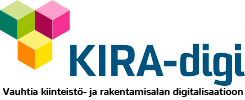Managing urban runoff
The project developed a precise method for classifying ground surfaces. The method was used to find the places where urban runoff could pose problems in the City of Imatra.
What kind of problem did this project try to solve?
Urban runoff, i.e. water from precipitation and thawing, can cause flooding especially in the spring, when snows melt, or during the rainy seasons of spring and autumn. According to the Building Act, municipalities are responsible for managing urban runoff in their local detailed plan area. However, assessing the risks related to urban runoff is not always an easy task.
The project developed the modelling of urban runoff that could pose challenges in a city environment with the aim of enabling municipalities to better assess urban runoff risks and predict local flooding.
Objective: enabling better management of urban runoff
The test work in this project aimed at creating a replicable and standardised method for automating the classification of ground surfaces. The ultimate purpose of the method is to enable the development of a tool for modelling and managing urban runoff in the municipalities. A specific objective was to identify pervious and impervious surfaces in the urban environments.
What was done in this project?
The test work in this project produced the most accurate automated method possible for classifying ground surfaces using multichannel laser scanning material. Laser scanning is a remote mapping method that provides precise, three-dimensional data on an object through the use of laser beams.
The advantage of laser scanning compared to aerial surveys is that it generates signals that depend only on the features and distance of the scanned object. In aerial surveying, on the other hand, the shades cast by buildings or trees can make it more difficult to detect an object, thus hampering calculation methods based on automatic classification. With laser scanning data, this problem is eliminated.
The classification of ground surfaces was carried out in an area of the City of Imatra that was laser scanned and surveyed from the air in the summer of 2016. The project’s calculations are mainly based on laser point cloud data. Point cloud data refers to a three-dimensional model of an object formed by laser scanning, where each laser beam represents one point.
What outcomes did the experiment produce?
The method developed in the project allowed the testers to search for locations in the City of Imatra where urban runoff problems could potentially occur due to the fact that water flowing into these locations is unable to percolate through the soil.
Based on the feedback received from the City of Imatra, the data collected in this project will be very useful in the general planning stage, when the area is mapped for more detailed planning.
Who benefits?
All those who must assess urban runoff risks in the municipalities – such as civil servants and water resources management facilities in the municipalities, consultancy and contracting companies, and maintenance companies.
Modelling urban runoff in the city environment
Duration: 3 April 2017–31 August 2017
Implemented by: Blom Kartta Oy
Contact information
Jukka Erkkilä, Key Customer Manager, Blom Kartta Oy
Tel: +358 40 823 6778
Email: jukka.erkkila(at)blomkartta.fi




